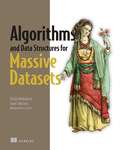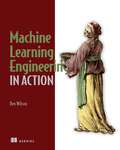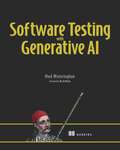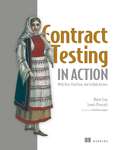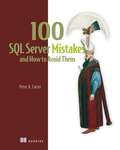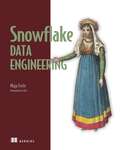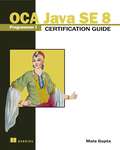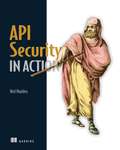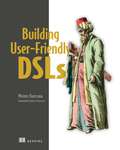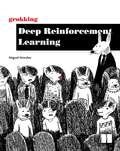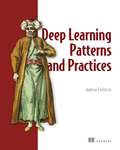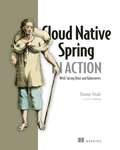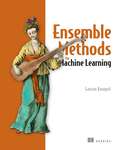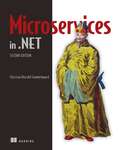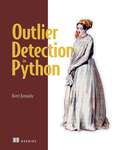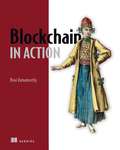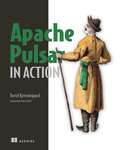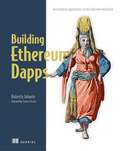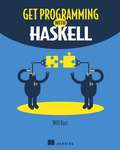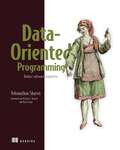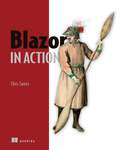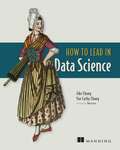- Table View
- List View
Algorithms and Data Structures for Massive Datasets
by Dzejla Medjedovic Emin TahirovicMassive modern datasets make traditional data structures and algorithms grind to a halt. This fun and practical guide introduces cutting-edge techniques that can reliably handle even the largest distributed datasets.In Algorithms and Data Structures for Massive Datasets you will learn: Probabilistic sketching data structures for practical problems Choosing the right database engine for your application Evaluating and designing efficient on-disk data structures and algorithms Understanding the algorithmic trade-offs involved in massive-scale systems Deriving basic statistics from streaming data Correctly sampling streaming data Computing percentiles with limited space resources Algorithms and Data Structures for Massive Datasets reveals a toolbox of new methods that are perfect for handling modern big data applications. You&’ll explore the novel data structures and algorithms that underpin Google, Facebook, and other enterprise applications that work with truly massive amounts of data. These effective techniques can be applied to any discipline, from finance to text analysis. Graphics, illustrations, and hands-on industry examples make complex ideas practical to implement in your projects—and there&’s no mathematical proofs to puzzle over. Work through this one-of-a-kind guide, and you&’ll find the sweet spot of saving space without sacrificing your data&’s accuracy. About the technology Standard algorithms and data structures may become slow—or fail altogether—when applied to large distributed datasets. Choosing algorithms designed for big data saves time, increases accuracy, and reduces processing cost. This unique book distills cutting-edge research papers into practical techniques for sketching, streaming, and organizing massive datasets on-disk and in the cloud. About the book Algorithms and Data Structures for Massive Datasets introduces processing and analytics techniques for large distributed data. Packed with industry stories and entertaining illustrations, this friendly guide makes even complex concepts easy to understand. You&’ll explore real-world examples as you learn to map powerful algorithms like Bloom filters, Count-min sketch, HyperLogLog, and LSM-trees to your own use cases. What's inside Probabilistic sketching data structures Choosing the right database engine Designing efficient on-disk data structures and algorithms Algorithmic tradeoffs in massive-scale systems Computing percentiles with limited space resources About the reader Examples in Python, R, and pseudocode. About the author Dzejla Medjedovic earned her PhD in the Applied Algorithms Lab at Stony Brook University, New York. Emin Tahirovic earned his PhD in biostatistics from University of Pennsylvania. Illustrator Ines Dedovic earned her PhD at the Institute for Imaging and Computer Vision at RWTH Aachen University, Germany. Table of Contents 1 Introduction PART 1 HASH-BASED SKETCHES 2 Review of hash tables and modern hashing 3 Approximate membership: Bloom and quotient filters 4 Frequency estimation and count-min sketch 5 Cardinality estimation and HyperLogLog PART 2 REAL-TIME ANALYTICS 6 Streaming data: Bringing everything together 7 Sampling from data streams 8 Approximate quantiles on data streams PART 3 DATA STRUCTURES FOR DATABASES AND EXTERNAL MEMORY ALGORITHMS 9 Introducing the external memory model 10 Data structures for databases: B-trees, Bε-trees, and LSM-trees 11 External memory sorting
Own Your Tech Career: Soft skills for technologists
by Don JonesOwn Your Tech Career: Soft skills for technologists is a guide to taking control of your professional life. It teaches you to approach your career with planning and purpose, always making active decisions towards your goals.Summary In Own Your Tech Career: Soft skills for technologists, you will: Define what &“success&” means for your career Discover personal branding and career maintenance Prepare for and conduct a tech job hunt Spot speed bumps and barriers that can derail your progress Learn how to navigate the rules of the business world Perform market analysis to keep your tech skills fresh and relevant Whatever your road to success, you&’ll benefit from the toolbox of career-boosting techniques you&’ll find in Own Your Tech Career: Soft skills for technologists. You&’ll discover in-demand communication and teamwork skills, essential rules for professionalism, tactics of the modern job hunt, and more. Purchase of the print book includes a free eBook in PDF, Kindle, and ePub formats from Manning Publications. About the technology A successful technology career demands more than just technical ability. Achieving your goals requires clear communication, top-notch time management, and a knack for navigating business needs. Master the &“soft skills,&” and you&’ll have a smoother path to success and satisfaction, however you define that for yourself. About the book Own Your Tech Career: Soft skills for technologists helps you get what you want out of your technology career. You&’ll start by defining your ambition—whether that&’s a salary, a job title, a flexible schedule, or something else. Once you know where you&’re going, this book&’s adaptable advice guides your journey. You&’ll learn conflict resolution and teamwork, master nine rules of professionalism, and build the confidence and skill you need to stay on the path you&’ve set for yourself. What's inside Personal branding and career maintenance Barriers that derail progress The rules of the business world Market analysis to keep tech skills fresh About the reader For tech professionals who want to take control of their career. About the author Microsoft MVP Don Jones brings his years of experience as a successful IT trainer to this engaging guide. Table of Contents 1 Own your career 2 Build and maintain your brand 3 Network 4 Be part of a technology community 5 Keep your tech skills fresh and relevant 6 Show up as a professional 7 Manage your time 8 Handle remote work 9 Be a team player 10 Be a team leade 11 Solve problems 12 Conquer written communications 13 Conquer verbal communications 14 Resolve conflicts 15 Be a data-driven, critical thinker 16 Understand how businesses work 17 Be a better decision-maker 18 Help others 19 Be prepared for anything 20 Business math and terminology for technologists 21 Tools for the modern job hunt
Machine Learning Engineering in Action
by Ben WilsonField-tested tips, tricks, and design patterns for building machine learning projects that are deployable, maintainable, and secure from concept to production.In Machine Learning Engineering in Action, you will learn: Evaluating data science problems to find the most effective solution Scoping a machine learning project for usage expectations and budget Process techniques that minimize wasted effort and speed up production Assessing a project using standardized prototyping work and statistical validation Choosing the right technologies and tools for your project Making your codebase more understandable, maintainable, and testable Automating your troubleshooting and logging practices Ferrying a machine learning project from your data science team to your end users is no easy task. Machine Learning Engineering in Action will help you make it simple. Inside, you'll find fantastic advice from veteran industry expert Ben Wilson, Principal Resident Solutions Architect at Databricks. Ben introduces his personal toolbox of techniques for building deployable and maintainable production machine learning systems. You'll learn the importance of Agile methodologies for fast prototyping and conferring with stakeholders, while developing a new appreciation for the importance of planning. Adopting well-established software development standards will help you deliver better code management, and make it easier to test, scale, and even reuse your machine learning code. Every method is explained in a friendly, peer-to-peer style and illustrated with production-ready source code. About the technology Deliver maximum performance from your models and data. This collection of reproducible techniques will help you build stable data pipelines, efficient application workflows, and maintainable models every time. Based on decades of good software engineering practice, machine learning engineering ensures your ML systems are resilient, adaptable, and perform in production. About the book Machine Learning Engineering in Action teaches you core principles and practices for designing, building, and delivering successful machine learning projects. You'll discover software engineering techniques like conducting experiments on your prototypes and implementing modular design that result in resilient architectures and consistent cross-team communication. Based on the author's extensive experience, every method in this book has been used to solve real-world projects. What's inside Scoping a machine learning project for usage expectations and budget Choosing the right technologies for your design Making your codebase more understandable, maintainable, and testable Automating your troubleshooting and logging practices About the reader For data scientists who know machine learning and the basics of object-oriented programming. About the author Ben Wilson is Principal Resident Solutions Architect at Databricks, where he developed the Databricks Labs AutoML project, and is an MLflow committer.
Software Testing with Generative AI
by Mark WinteringhamSpeed up your testing and deliver exceptional product quality with the power of AI tools.The more you test, the more you learn about your software. Software Testing with Generative AI shows you how you can expand, automate, and enhance your testing with Large Language Model (LLM)-based AI. Your team will soon be delivering higher quality tests, all in less time. In Software Testing with Generative AI you&’ll learn how to: • Spot opportunities to improve test quality with AI • Construct test automation with the support of AI tools • Formulate new ideas during exploratory testing using AI tools • Use AI tools to aid the design process of new features • Improve the testability of a context with the help of AI tools • Maximize your output with prompt engineering • Create custom LLMs for your business&’s specific needs Software Testing with Generative AI is full of hype-free advice for supporting your software testing with AI. In it, you&’ll find strategies from bestselling author Mark Winteringham to generate synthetic testing data, implement automation, and even augment and improve your test design with AI. Foreword by Nicola Martin. About the technology There&’s a simple rule in software testing: the more you test, the more you learn. And as any testing pro will tell you, good testing takes time. By integrating large language models (LLMs) and generative AI into your process, you can dramatically automate and enhance testing, improve quality and coverage, and deliver more meaningful results. About the book Software Testing with Generative AI shows you how AI can elevate every aspect of testing—automation, test data management, test scripting, exploratory testing, and more! Learn how to use AI coding tools like Copilot to guide test-driven development, get relevant feedback about your applications from ChatGPT, and use the OpenAI API to integrate AI into your data generation. You&’ll soon have higher-quality testing that takes up less of your time. What's inside • Improve test quality and coverage • AI-powered test automation • Build agents that act as testing assistants About the reader For developers, testers, and quality engineers. About the author Mark Winteringham is an experienced software tester who teaches many aspects of software testing. He is the author of Testing Web APIs. The technical editor on this book was Robert Walsh. Table of Contents Part 1 1 Enhancing testing with large language models 2 Large language models and prompt engineering 3 Artificial intelligence, automation, and testing Part 2 4 AI-assisted testing for developers 5 Test planning with AI support 6 Rapid data creation using AI 7 Accelerating and improving UI automation using AI 8 Assisting exploratory testing with artificial intelligence 9 AI agents as testing assistants Part 3 10 Introducing customized LLMs 11 Contextualizing prompts with retrieval-augmented generation 12 Fine-tuning LLMs with business domain knowledge Appendix A Setting up and using ChatGPT Appendix B Setting up and using GitHub Copilot Appendix C Exploratory testing notes
Contract Testing in Action: With Pact, PactFlow, and GitHub Actions (In Action)
by Marie Cruz Lewis PrescottContract testing is a simple, reliable way to make sure that each service and API plays nice with other components so you can deploy independently and safely.Large, loosely coupled systems have hundreds, even thousands, of interactions—and traditional testing can often struggle to keep up! Enter contract testing. This rapidly growing new approach checks API and service compatibility by verifying it against an agreed contract. No more unexpected integration issues, and no more breaking things in production! In Contract Testing in Action you&’ll learn: • The core concepts and practices of contract testing • Testing microservices with Pact • Consumer-driven and bi-directional testing • Building a contract testing framework • Converting API integration tests to contract tests Contract Testing in Action introduces the practice of contract testing through engaging hands-on examples. You&’ll learn how to introduce contract tests for multiple different types of communication, from REST APIs to event-driven architecture. By the end of this practical guide, you&’ll be comfortable with advanced contract testing concepts like can-i-deploy, provider states, and webhooks. You&’ll even get tips on how to introduce contract testing to your team and other business stakeholders. About the technology It&’s difficult to test API and event-based services that can be used by many applications simultaneously through a complex network of integrations. Contract testing offers a straightforward solution. API and service compatibility are verified against agreed-upon contracts that each component in the system—and the developers that build them—can understand and respect. This transformative technique helps uncover integration issues early and adds vital transparency to any system. About the book Contract Testing in Action makes it easy for your team to adopt contract testing for microservices and other API-centric systems. You&’ll start by learning how contract testing fits into the software development lifecycle, and then you&’ll explore practical methods to integrate it with your own tech stack and practices. You&’ll use leading contract testing tools—including Pact, PactFlow, and GitHub Actions—to build your own contract testing framework, set up consumer-driven contract testing for REST and GraphQL APIs, and integrate it into your CI/CD pipeline. What's inside • Testing microservices with Pact • Consumer-driven and bi-directional contract testing • Building a contract testing framework • Converting API integration tests to contract tests About the reader For software developers and quality engineers who have worked with Java or JavaScript, and APIs. About the author Marie Cruz is a Software Tester with over ten years of experience and also a Developer Advocate at Grafana Labs. Lewis Prescott is a Test Specialist at IBM with over nine years experience in software testing.
100 SQL Server Mistakes and How to Avoid Them
by Peter CarterAll the mistakes you might make with SQL Server—and how to avoid them!100 SQL Server Mistakes and How to Avoid Them prepares you for the pitfalls database professionals often encounter—from administration to development, availability, and security. You'll learn to sidestep common errors that slow down your T-SQL code and ensure your SQL Server is installed and configured to handle anything your organization throws at it. Inside 100 SQL Server Mistakes and How to Avoid Them you'll learn to avoid: • Development errors when writing T-SQL • Installation and administration mistakes • Optimization missteps • Common pitfalls relating to high availability and disaster recovery (HA/DR) • Security oversights that can endanger your data 100 SQL Server Mistakes and How to Avoid Them doesn't focus on the "happy path"—instead, it covers all the errors and problems you might face as a SQL Server developer or administrator. Each chapter is filled with real-world issues drawn from author Peter A. Carter&’s two-decade-long career in SQL Server. Peter's seasoned advice helps dispel myths, debunk misconceptions, and set you on the right road. About the technology Perfecting a SQL Server system can be a complex balancing act. Why is T-SQL running so slowly? Is the right data available? Are we protected against data theft? What about that new server instance I need to administer? Even the most skilled SQL Server experts make mistakes that cost time and performance. This book can help you get it right the first time. About the book 100 SQL Server Mistakes and How to Avoid Them focuses exclusively on the errors that you might—and probably will—make as a SQL Server admin or developer. Real-world examples, code samples, and helpful diagrams make it easy to understand each issue and its solution. You&’ll learn how to write performant code, design efficient database schemas, implement error handling, work with complex data types, and much more, all in a friendly, common-sense problem/solution format. What's inside • T-SQL development • Installation, administration, and optimization • High availability and security About the reader Readers need to understand basic SQL Server concepts and SQL queries. Perfect for junior database admins, full-stack developers, and &“accidental&” DBAs. About the author Peter A. Carter is a SQL Server expert with experience developing, administering, and architecting data-tier applications and SQL Server platforms. Table of Contents 1 Introducing SQL Server 2 Development standards 3 Data types 4 Database design 5 T-SQL development 6 SSIS development 7 Error handling, testing, source control, and deployment 8 SQL Server installation 9 Instance and database management 10 Optimization 11 Indexes 12 Backups 13 Availability 14 Security
Snowflake Data Engineering
by Maja FerleA practical introduction to data engineering on the powerful Snowflake cloud data platform.Data engineers create the pipelines that ingest raw data, transform it, and funnel it to the analysts and professionals who need it. The Snowflake cloud data platform provides a suite of productivity-focused tools and features that simplify building and maintaining data pipelines. In Snowflake Data Engineering, Snowflake Data Superhero Maja Ferle shows you how to get started. In Snowflake Data Engineering you will learn how to: • Ingest data into Snowflake from both cloud and local file systems • Transform data using functions, stored procedures, and SQL • Orchestrate data pipelines with streams and tasks, and monitor their execution • Use Snowpark to run Python code in your pipelines • Deploy Snowflake objects and code using continuous integration principles • Optimize performance and costs when ingesting data into Snowflake Snowflake Data Engineering reveals how Snowflake makes it easy to work with unstructured data, set up continuous ingestion with Snowpipe, and keep your data safe and secure with best-in-class data governance features. Along the way, you&’ll practice the most important data engineering tasks as you work through relevant hands-on examples. Throughout, author Maja Ferle shares design tips drawn from her years of experience to ensure your pipeline follows the best practices of software engineering, security, and data governance. Foreword by Joe Reis. About the technology Pipelines that ingest and transform raw data are the lifeblood of business analytics, and data engineers rely on Snowflake to help them deliver those pipelines efficiently. Snowflake is a full-service cloud-based platform that handles everything from near-infinite storage, fast elastic compute services, inbuilt AI/ML capabilities like vector search, text-to-SQL, code generation, and more. This book gives you what you need to create effective data pipelines on the Snowflake platform. About the book Snowflake Data Engineering guides you skill-by-skill through accomplishing on-the-job data engineering tasks using Snowflake. You&’ll start by building your first simple pipeline and then expand it by adding increasingly powerful features, including data governance and security, adding CI/CD into your pipelines, and even augmenting data with generative AI. You&’ll be amazed how far you can go in just a few short chapters! What's inside • Ingest data from the cloud, APIs, or Snowflake Marketplace • Orchestrate data pipelines with streams and tasks • Optimize performance and cost About the reader For software developers and data analysts. Readers should know the basics of SQL and the Cloud. About the author Maja Ferle is a Snowflake Subject Matter Expert and a Snowflake Data Superhero who holds the SnowPro Advanced Data Engineer and the SnowPro Advanced Data Analyst certifications. Table of Contents Part 1 1 Data engineering with Snowflake 2 Creating your first data pipeline Part 2 3 Best practices for data staging 4 Transforming data 5 Continuous data ingestion 6 Executing code natively with Snowpark 7 Augmenting data with outputs from large language models 8 Optimizing query performance 9 Controlling costs 10 Data governance and access control Part 3 11 Designing data pipelines 12 Ingesting data incrementally 13 Orchestrating data pipelines 14 Testing for data integrity and completeness 15 Data pipeline continuous integration
OCA Java SE 8 Programmer I Certification Guide
by Mala GuptaSummaryOCA Java SE 8 Programmer I Certification Guide prepares you for the 1Z0-808 with complete coverage of the exam. You'll explore important Java topics as you systematically learn what's required to successfully pass the test.Purchase of the print book includes a free eBook in PDF, Kindle, and ePub formats from Manning Publications.About the BookTo earn the OCA Java SE 8 Programmer I Certification, you have to know your Java inside and out, and to pass the exam you need to understand the test itself. This book cracks open the questions, exercises, and expectations you'll face on the OCA exam so you'll be ready and confident on test day. OCA Java SE 8 Programmer I Certification Guide prepares Java developers for the 1Z0-808 with thorough coverage of Java topics typically found on the exam. Each chapter starts with a list of exam objectives mapped to section numbers, followed by sample questions and exercises that reinforce key concepts. You'll learn techniques and concepts in multiple ways, including memorable analogies, diagrams, flowcharts, and lots of well-commented code. You'll also get the scoop on common exam mistakes and ways to avoid traps and pitfalls.What's InsideCovers all exam topicsHands-on coding exercisesFlowcharts, UML diagrams, and other visual aidsHow to avoid built-in traps and pitfallsComplete coverage of the OCA Java SE 8 Programmer I exam (1Z0-808) About the ReaderWritten for developers with a working knowledge of Java who want to earn the OCA Java SE 8 Programmer I Certification.About the AuthorMala Gupta is a Java coach and trainer who holds multiple Java certifications. Since 2006 she has been actively supporting Java certification as a path to career advancement.Table of ContentsIntroductionJava basicsWorking with Java data typesMethods and encapsulationSelected classes from the Java API and arraysFlow controlWorking with inheritanceException handlingFull mock exam
API Security in Action
by Neil MaddenAPI Security in Action teaches you how to create secure APIs for any situation. By following this hands-on guide you&’ll build a social network API while mastering techniques for flexible multi-user security, cloud key management, and lightweight cryptography.Summary A web API is an efficient way to communicate with an application or service. However, this convenience opens your systems to new security risks. API Security in Action gives you the skills to build strong, safe APIs you can confidently expose to the world. Inside, you&’ll learn to construct secure and scalable REST APIs, deliver machine-to-machine interaction in a microservices architecture, and provide protection in resource-constrained IoT (Internet of Things) environments. Purchase of the print book includes a free eBook in PDF, Kindle, and ePub formats from Manning Publications. About the technology APIs control data sharing in every service, server, data store, and web client. Modern data-centric designs—including microservices and cloud-native applications—demand a comprehensive, multi-layered approach to security for both private and public-facing APIs. About the book API Security in Action teaches you how to create secure APIs for any situation. By following this hands-on guide you&’ll build a social network API while mastering techniques for flexible multi-user security, cloud key management, and lightweight cryptography. When you&’re done, you&’ll be able to create APIs that stand up to complex threat models and hostile environments. What's inside Authentication Authorization Audit logging Rate limiting Encryption About the reader For developers with experience building RESTful APIs. Examples are in Java. About the author Neil Madden has in-depth knowledge of applied cryptography, application security, and current API security technologies. He holds a Ph.D. in Computer Science. Table of Contents PART 1 - FOUNDATIONS 1 What is API security? 2 Secure API development 3 Securing the Natter API PART 2 - TOKEN-BASED AUTHENTICATION 4 Session cookie authentication 5 Modern token-based authentication 6 Self-contained tokens and JWTs PART 3 - AUTHORIZATION 7 OAuth2 and OpenID Connect 8 Identity-based access control 9 Capability-based security and macaroons PART 4 - MICROSERVICE APIs IN KUBERNETES 10 Microservice APIs in Kubernetes 11 Securing service-to-service APIs PART 5 - APIs FOR THE INTERNET OF THINGS 12 Securing IoT communications 13 Securing IoT APIs
Building User-Friendly DSLs
by Meinte BoersmaCraft domain-specific languages that empower experts to create software themselves.Domain-specific languages put business experts at the heart of software development. These purpose-built tools let your clients write down their business knowledge and have it automatically translated into working software—no dev time required. They seamlessly bridge the knowledge gap between programmers and subject experts, enabling better communication and freeing you from time-consuming code adjustments. Inside Building User-Friendly DSLs you&’ll learn how to: • Build a complete Domain IDE for a car rental company • Implement a projectional editor for your DSL • Implement content assist, type systems, expressions, and versioning language aspects • Evaluate business rules • Work with Abstract Syntax Trees • Reduce notated DSL content in concrete syntax into abstract syntax Building User-Friendly DSLs takes you on a carefully-planned journey through everything you need to create your own DSLs. It focuses on building DSLs that are easy for busy business experts to learn and master. By working through a detailed example of a car rental company, you'll see how to create a custom DSL with a modern and intuitive UI that can replace tedious coding activities. About the technology Here&’s the central problem of software development: business users know what they need their apps to do, but they don&’t know how to write the code themselves. As a developer, this means you spend a lot of time learning the same domain-specific details your user already knows. Now there&’s a way to bridge this gap! You can create a Domain-Specific Language (DSL) that empowers non-technical business users to create and customize their own applications without writing any code. About the book Building User-Friendly DSLs teaches you how to create a complete domain-specific language that looks and works like a web application. These easy-to-use DSLs put the power to create custom software into the hands of business domain experts. As you go, you&’ll cover all the essentials, from establishing structure and syntax of your DSL to implementing a user-friendly interface. What's inside • Implement a projectional editor for your DSL • Work with Abstract Syntax Trees • Evaluate business rules About the reader For developers with JavaScript and web development experience. About the author Meinte Boersma is a senior developer and an evangelist of model-driven software development and DSLs. Table of Contents 1 What is a domain-specific language? 2 Representing DSL content as structured data 3 Working with ASTs in code 4 Projecting the AST 5 Editing values in the projection 6 Editing objects in the projection 7 Implementing persistence and transportation of ASTs 8 Generating code from the AST 9 Preventing things from blowing up 10 Managing change 11 Implementing expressions: Binary operations 12 Implementing expressions: Order of operations 13 Implementing a type system 14 Implementing business rules 15 Some topics we didn&’t cover
Grokking Deep Reinforcement Learning
by Miguel MoralesGrokking Deep Reinforcement Learning uses engaging exercises to teach you how to build deep learning systems. This book combines annotated Python code with intuitive explanations to explore DRL techniques. You&’ll see how algorithms function and learn to develop your own DRL agents using evaluative feedback.Summary We all learn through trial and error. We avoid the things that cause us to experience pain and failure. We embrace and build on the things that give us reward and success. This common pattern is the foundation of deep reinforcement learning: building machine learning systems that explore and learn based on the responses of the environment. Grokking Deep Reinforcement Learning introduces this powerful machine learning approach, using examples, illustrations, exercises, and crystal-clear teaching. You'll love the perfectly paced teaching and the clever, engaging writing style as you dig into this awesome exploration of reinforcement learning fundamentals, effective deep learning techniques, and practical applications in this emerging field. Purchase of the print book includes a free eBook in PDF, Kindle, and ePub formats from Manning Publications. About the technology We learn by interacting with our environment, and the rewards or punishments we experience guide our future behavior. Deep reinforcement learning brings that same natural process to artificial intelligence, analyzing results to uncover the most efficient ways forward. DRL agents can improve marketing campaigns, predict stock performance, and beat grand masters in Go and chess. About the book Grokking Deep Reinforcement Learning uses engaging exercises to teach you how to build deep learning systems. This book combines annotated Python code with intuitive explanations to explore DRL techniques. You&’ll see how algorithms function and learn to develop your own DRL agents using evaluative feedback. What's inside An introduction to reinforcement learning DRL agents with human-like behaviors Applying DRL to complex situations About the reader For developers with basic deep learning experience. About the author Miguel Morales works on reinforcement learning at Lockheed Martin and is an instructor for the Georgia Institute of Technology&’s Reinforcement Learning and Decision Making course. Table of Contents 1 Introduction to deep reinforcement learning 2 Mathematical foundations of reinforcement learning 3 Balancing immediate and long-term goals 4 Balancing the gathering and use of information 5 Evaluating agents&’ behaviors 6 Improving agents&’ behaviors 7 Achieving goals more effectively and efficiently 8 Introduction to value-based deep reinforcement learning 9 More stable value-based methods 10 Sample-efficient value-based methods 11 Policy-gradient and actor-critic methods 12 Advanced actor-critic methods 13 Toward artificial general intelligence
Deep Learning Patterns and Practices
by Andrew FerlitschDiscover best practices, reproducible architectures, and design patterns to help guide deep learning models from the lab into production.In Deep Learning Patterns and Practices you will learn: Internal functioning of modern convolutional neural networks Procedural reuse design pattern for CNN architectures Models for mobile and IoT devices Assembling large-scale model deployments Optimizing hyperparameter tuning Migrating a model to a production environment The big challenge of deep learning lies in taking cutting-edge technologies from R&D labs through to production. Deep Learning Patterns and Practices is here to help. This unique guide lays out the latest deep learning insights from author Andrew Ferlitsch&’s work with Google Cloud AI. In it, you'll find deep learning models presented in a unique new way: as extendable design patterns you can easily plug-and-play into your software projects. Each valuable technique is presented in a way that's easy to understand and filled with accessible diagrams and code samples. Purchase of the print book includes a free eBook in PDF, Kindle, and ePub formats from Manning Publications. About the technology Discover best practices, design patterns, and reproducible architectures that will guide your deep learning projects from the lab into production. This awesome book collects and illuminates the most relevant insights from a decade of real world deep learning experience. You&’ll build your skills and confidence with each interesting example. About the book Deep Learning Patterns and Practices is a deep dive into building successful deep learning applications. You&’ll save hours of trial-and-error by applying proven patterns and practices to your own projects. Tested code samples, real-world examples, and a brilliant narrative style make even complex concepts simple and engaging. Along the way, you&’ll get tips for deploying, testing, and maintaining your projects. What's inside Modern convolutional neural networks Design pattern for CNN architectures Models for mobile and IoT devices Large-scale model deployments Examples for computer vision About the reader For machine learning engineers familiar with Python and deep learning. About the author Andrew Ferlitsch is an expert on computer vision, deep learning, and operationalizing ML in production at Google Cloud AI Developer Relations. Table of Contents PART 1 DEEP LEARNING FUNDAMENTALS 1 Designing modern machine learning 2 Deep neural networks 3 Convolutional and residual neural networks 4 Training fundamentals PART 2 BASIC DESIGN PATTERN 5 Procedural design pattern 6 Wide convolutional neural networks 7 Alternative connectivity patterns 8 Mobile convolutional neural networks 9 Autoencoders PART 3 WORKING WITH PIPELINES 10 Hyperparameter tuning 11 Transfer learning 12 Data distributions 13 Data pipeline 14 Training and deployment pipeline
Cloud Native Spring in Action: With Spring Boot and Kubernetes
by Thomas VitaleBuild and deliver production-grade cloud-native apps with Spring framework and Kubernetes. In Cloud Native Spring in Action you&’ll learn: Cloud native best practices and design patterns Build and test cloud native apps with Spring Boot and Spring Cloud Handle security, resilience, and scalability in imperative and reactive applications Configure, deploy, and observe applications on Kubernetes Continuous delivery and GitOps to streamline your software lifecycle Cloud Native Spring in Action is a practical guide to building applications that are designed for cloud environments. You&’ll learn effective Spring and Kubernetes cloud development techniques that you can immediately apply to enterprise-grade applications. Follow a detailed and complete cloud native system from first concept right through to production and deployment, learning best practices, design patterns, and little-known tips and tricks for pain-free cloud native development. Including coverage of security, continuous delivery, and configuration, this hands-on guide is the perfect primer for navigating the increasingly complex cloud landscape. About the technology Do you want to learn how to build scalable, resilient, and observable Spring applications that take full advantage of the cloud computing model? If so, Cloud Native Spring in Action is the book for you! It will teach you the essential techniques and practices you need to build efficient Spring Boot applications ready for production in the cloud. About the book In Cloud Native Spring in Action, you&’ll learn how to containerize your Spring Boot applications with Cloud Native Buildpacks and deploy them on Kubernetes. This practical guide delivers unique insights into hosting microservices, serverless applications, and other modern architectures on cloud platforms. You&’ll learn how to use Spring-based methodologies, practices, and patterns that you won&’t find anywhere else. What's inside Implement cloud native patterns with Spring Handle security, resilience, and scalability Build and test imperative and reactive applications Configuration and observability on Kubernetes Adopt continuous delivery and GitOps About the reader For intermediate Java developers. About the author Thomas Vitale is a software engineer, open source contributor, and international conference speaker. Table of Contents PART 1 CLOUD NATIVE FUNDAMENTALS 1 Introduction to cloud native 2 Cloud native patterns and technologies PART 2 CLOUD NATIVE DEVELOPMENT 3 Getting started with cloud native development 4 Externalized configuration management 5 Persisting and managing data in the cloud 6 Containerizing Spring Boot 7 Kubernetes fundamentals for Spring Boot PART 3 CLOUD NATIVE DISTRIBUTED SYSTEMS 8 Reactive Spring: Resilience and scalability 9 API gateway and circuit breakers 10 Event-driven applications and functions 11 Security: Authentication and SPA 12 Security: Authorization and auditing
Ensemble Methods for Machine Learning
by Gautam KunapuliEnsemble machine learning combines the power of multiple machine learning approaches, working together to deliver models that are highly performant and highly accurate.Inside Ensemble Methods for Machine Learning you will find: Methods for classification, regression, and recommendations Sophisticated off-the-shelf ensemble implementations Random forests, boosting, and gradient boosting Feature engineering and ensemble diversity Interpretability and explainability for ensemble methods Ensemble machine learning trains a diverse group of machine learning models to work together, aggregating their output to deliver richer results than a single model. Now in Ensemble Methods for Machine Learning you&’ll discover core ensemble methods that have proven records in both data science competitions and real-world applications. Hands-on case studies show you how each algorithm works in production. By the time you're done, you'll know the benefits, limitations, and practical methods of applying ensemble machine learning to real-world data, and be ready to build more explainable ML systems. About the Technology Automatically compare, contrast, and blend the output from multiple models to squeeze the best results from your data. Ensemble machine learning applies a &“wisdom of crowds&” method that dodges the inaccuracies and limitations of a single model. By basing responses on multiple perspectives, this innovative approach can deliver robust predictions even without massive datasets. About the Book Ensemble Methods for Machine Learning teaches you practical techniques for applying multiple ML approaches simultaneously. Each chapter contains a unique case study that demonstrates a fully functional ensemble method, with examples including medical diagnosis, sentiment analysis, handwriting classification, and more. There&’s no complex math or theory—you&’ll learn in a visuals-first manner, with ample code for easy experimentation! What&’s Inside Bagging, boosting, and gradient boosting Methods for classification, regression, and retrieval Interpretability and explainability for ensemble methods Feature engineering and ensemble diversity About the Reader For Python programmers with machine learning experience. About the Author Gautam Kunapuli has over 15 years of experience in academia and the machine learning industry. Table of Contents PART 1 - THE BASICS OF ENSEMBLES 1 Ensemble methods: Hype or hallelujah? PART 2 - ESSENTIAL ENSEMBLE METHODS 2 Homogeneous parallel ensembles: Bagging and random forests 3 Heterogeneous parallel ensembles: Combining strong learners 4 Sequential ensembles: Adaptive boosting 5 Sequential ensembles: Gradient boosting 6 Sequential ensembles: Newton boosting PART 3 - ENSEMBLES IN THE WILD: ADAPTING ENSEMBLE METHODS TO YOUR DATA 7 Learning with continuous and count labels 8 Learning with categorical features 9 Explaining your ensembles
Microservices in .NET, Second Edition
by Christian Horsdal GammelgaardMicroservices in .NET, Second Edition teaches you to build and deploy microservices using ASP.NET and Azure services.Summary In Microservices in .NET, Second Edition you will learn how to: Build scalable microservices that are reliable in production Optimize microservices for continuous delivery Design event-based collaboration between microservices Deploy microservices to Kubernetes Set up Kubernetes in Azure Microservices in .NET, Second Edition is a comprehensive guide to building microservice applications using the .NET stack. After a crystal-clear introduction to the microservices architectural style, it teaches you practical microservices development skills using ASP.NET. This second edition of the bestselling original has been revised with up-to-date tools for the .NET ecosystem, and more new coverage of scoping microservices and deploying to Kubernetes. Purchase of the print book includes a free eBook in PDF, Kindle, and ePub formats from Manning Publications. About the technology Microservice architectures connect independent components that must work together as a system. Integrating new technologies like Docker and Kubernetes with Microsoft&’s familiar ASP.NET framework and Azure cloud platform enables .NET developers to create and manage microservices efficiently. About the book Microservices in .NET, Second Edition teaches you to build and deploy microservices using ASP.NET and Azure services. It lays out microservice architecture simply, and then guides you through several real-world projects, such as building an ecommerce shopping cart. In this fully revised edition, you&’ll learn about scoping microservices, deploying to Kubernetes, and operations concerns like monitoring, logging, and security. What's inside Optimize microservices for continuous delivery Design event-based collaboration between microservices Deploy microservices to Kubernetes Set up Kubernetes in Azure About the reader For C# developers. No experience with microservices required. About the author Christian Horsdal is an independent consultant with more than 20 years of experience building projects from large-scale microservice systems to tiny embedded systems. Table of Contents PART 1 GETTING STARTED WITH MICROSERVICES 1 Microservices at a glance 2 A basic shopping cart microservice 3 Deploying a microservice to Kubernetes PART 2 BUILDING MICROSERVICES 4 Identifying and scoping microservices 5 Microservice collaboration 6 Data ownership and data storage 7 Designing for robustness 8 Writing tests for microservices PART 3 HANDLING CROSS-CUTTING CONCERNS: BUILDING A REUSABLE MICROSERVICE PLATFORM 9 Cross-cutting concerns: Monitoring and logging 10 Securing microservice-to-microservice communication 11 Building a reusable microservice platform PART 4 BUILDING APPLICATIONS 12 Creating applications over microservices
Outlier Detection in Python
by Brett KennedyLearn how to identify the unusual, interesting, extreme, or inaccurate parts of your data.Data scientists have two main tasks: finding patterns in data and finding the exceptions. These outliers are often the most informative parts of data, revealing hidden insights, novel patterns, and potential problems. Outlier Detection in Python is a practical guide to spotting the parts of a dataset that deviate from the norm, even when they're hidden or intertwined among the expected data points. In Outlier Detection in Python you'll learn how to: • Use standard Python libraries to identify outliers • Select the most appropriate detection methods • Combine multiple outlier detection methods for improved results • Interpret your results effectively • Work with numeric, categorical, time series, and text data Outlier detection is a vital tool for modern business, whether it's discovering new products, expanding markets, or flagging fraud and other suspicious activities. This guide presents the core tools for outlier detection, as well as techniques utilizing the Python data stack familiar to data scientists. To get started, you'll only need a basic understanding of statistics and the Python data ecosystem. About the technology Outliers—values that appear inconsistent with the rest of your data—can be the key to identifying fraud, performing a security audit, spotting bot activity, or just assessing the quality of a dataset. This unique guide introduces the outlier detection tools, techniques, and algorithms you&’ll need to find, understand, and respond to the anomalies in your data. About the book Outlier Detection in Python illustrates the principles and practices of outlier detection with diverse real-world examples including social media, finance, network logs, and other important domains. You&’ll explore a comprehensive set of statistical methods and machine learning approaches to identify and interpret the unexpected values in tabular, text, time series, and image data. Along the way, you&’ll explore scikit-learn and PyOD, apply key OD algorithms, and add some high value techniques for real world OD scenarios to your toolkit. What's inside • Python libraries to identify outliers • Combine outlier detection methods • Interpret your results About the reader For Python programmers familiar with tools like pandas and NumPy, and the basics of statistics. About the author Brett Kennedy is a data scientist with over thirty years&’ experience in software development and data science. Table fo Contents Part 1 1 Introducing outlier detection 2 Simple outlier detection 3 Machine learning-based outlier detection 4 The outlier detection process Part 2 5 Outlier detection using scikit-learn 6 The PyOD library 7 Additional libraries and algorithms for outlier detection Part 3 8 Evaluating detectors and parameters 9 Working with specific data types 10 Handling very large and very small datasets 11 Synthetic data for outlier detection 12 Collective outliers 13 Explainable outlier detection 14 Ensembles of outlier detectors 15 Working with outlier detection predictions Part 4 16 Deep learning-based outlier detection 17 Time-series data
TensorFlow in Action
by Thushan GanegedaraUnlock the TensorFlow design secrets behind successful deep learning applications! Deep learning StackOverflow contributor Thushan Ganegedara teaches you the new features of TensorFlow 2 in this hands-on guide.In TensorFlow in Action you will learn: Fundamentals of TensorFlow Implementing deep learning networks Picking a high-level Keras API for model building with confidence Writing comprehensive end-to-end data pipelines Building models for computer vision and natural language processing Utilizing pretrained NLP models Recent algorithms including transformers, attention models, and ElMo In TensorFlow in Action, you'll dig into the newest version of Google's amazing TensorFlow framework as you learn to create incredible deep learning applications. Author Thushan Ganegedara uses quirky stories, practical examples, and behind-the-scenes explanations to demystify concepts otherwise trapped in dense academic papers. As you dive into modern deep learning techniques like transformer and attention models, you&’ll benefit from the unique insights of a top StackOverflow contributor for deep learning and NLP. About the technology Google&’s TensorFlow framework sits at the heart of modern deep learning. Boasting practical features like multi-GPU support, network data visualization, and easy production pipelines using TensorFlow Extended (TFX), TensorFlow provides the most efficient path to professional AI applications. And the Keras library, fully integrated into TensorFlow 2, makes it a snap to build and train even complex models for vision, language, and more. About the book TensorFlow in Action teaches you to construct, train, and deploy deep learning models using TensorFlow 2. In this practical tutorial, you&’ll build reusable skill hands-on as you create production-ready applications such as a French-to-English translator and a neural network that can write fiction. You&’ll appreciate the in-depth explanations that go from DL basics to advanced applications in NLP, image processing, and MLOps, complete with important details that you&’ll return to reference over and over. What's inside Covers TensorFlow 2.9 Recent algorithms including transformers, attention models, and ElMo Build on pretrained models Writing end-to-end data pipelines with TFX About the reader For Python programmers with basic deep learning skills. About the author Thushan Ganegedara is a senior ML engineer at Canva and TensorFlow expert. He holds a PhD in machine learning from the University of Sydney. Table of Contents PART 1 FOUNDATIONS OF TENSORFLOW 2 AND DEEP LEARNING 1 The amazing world of TensorFlow 2 TensorFlow 2 3 Keras and data retrieval in TensorFlow 2 4 Dipping toes in deep learning 5 State-of-the-art in deep learning: Transformers PART 2 LOOK MA, NO HANDS! DEEP NETWORKS IN THE REAL WORLD 6 Teaching machines to see: Image classification with CNNs 7 Teaching machines to see better: Improving CNNs and making them confess 8 Telling things apart: Image segmentation 9 Natural language processing with TensorFlow: Sentiment analysis 10 Natural language processing with TensorFlow: Language modeling PART 3 ADVANCED DEEP NETWORKS FOR COMPLEX PROBLEMS 11 Sequence-to-sequence learning: Part 1 12 Sequence-to-sequence learning: Part 2 13 Transformers 14 TensorBoard: Big brother of TensorFlow 15 TFX: MLOps and deploying models with TensorFlow
Blockchain in Action (In Action Ser.)
by Bina RamamurthyThere&’s a lot more to the blockchain than mining Bitcoin. This secure system for registering and verifying ownership and identity is perfect for supply chain logistics, health records, and other sensitive data management tasks. Blockchain in Action unlocks the full potential of this revolutionary technology, showing you how to build your own decentralized apps for secure applications including digital democracy, private auctions, and electronic record management.Summary There&’s a lot more to the blockchain than mining Bitcoin. This secure system for registering and verifying ownership and identity is perfect for supply chain logistics, health records, and other sensitive data management tasks. Blockchain in Action unlocks the full potential of this revolutionary technology, showing you how to build your own decentralized apps for secure applications including digital democracy, private auctions, and electronic record management. Purchase of the print book includes a free eBook in PDF, Kindle, and ePub formats from Manning Publications. About the technology Blockchain is more than just the tech behind Bitcoin—much more! Combining impenetrable security, decentralized transactions, and independently verifiable supply chains, blockchain applications have transformed currency, digital identity, and logistics. Platforms such as Ethereum and Hyperledger make it easy to get started by using familiar programming languages. About the book Blockchain in Action teaches you how to design and build blockchain-based decentralized apps, and is written in a clear, jargon-free style. First, you&’ll get an overview of how blockchain works. Next, you&’ll code your first smart contract using Ethereum and Solidity, adding a web interface, trust validation, and other features until your app is ready for deployment. The only thing you need to get started is standard hardware and open source software. What's inside Blockchain compared with other distributed systems Development in Solidity Identity, privacy, and security On-chain and off-chain data and operations About the reader For programmers who know JavaScript. About the author Bina Ramamurthy has thirty years of experience teaching distributed systems, data science, peer-to-peer networking, and blockchain. Table of Contents PART 1 - GETTING STARTED WITH BLOCKCHAIN PROGRAMMING 1 Blockchain basics 2 Smart contracts 3 Techniques for trust and integrity 4 From smart contracts to Dapps PART 2 - TECHNIQUES FOR END-TO-END DAPP DEVELOPMENT 5 Security and privacy 6 On-chain and off-chain data 7 Web3 and a channel Dapp 8 Going public with Infura PART 3 - A ROADMAP AND THE ROAD AHEAD 9 Tokenization of assets 10 Testing smart contracts 11 A roadmap to Dapp development 12 Blockchain: The Road ahead
Apache Pulsar in Action
by David KjerrumgaardDeliver lightning fast and reliable messaging for your distributed applications with the flexible and resilient Apache Pulsar platform.In Apache Pulsar in Action you will learn how to: Publish from Apache Pulsar into third-party data repositories and platforms Design and develop Apache Pulsar functions Perform interactive SQL queries against data stored in Apache Pulsar Apache Pulsar in Action is a comprehensive and practical guide to building high-traffic applications with Pulsar. You&’ll learn to use this mature and battle-tested platform to deliver extreme levels of speed and durability to your messaging. Apache Pulsar committer David Kjerrumgaard teaches you to apply Pulsar&’s seamless scalability through hands-on case studies, including IOT analytics applications and a microservices app based on Pulsar functions. Purchase of the print book includes a free eBook in PDF, Kindle, and ePub formats from Manning Publications. About the technology Reliable server-to-server messaging is the heart of a distributed application. Apache Pulsar is a flexible real-time messaging platform built to run on Kubernetes and deliver the scalability and resilience required for cloud-based systems. Pulsar supports both streaming and message queuing, and unlike other solutions, it can communicate over multiple protocols including MQTT, AMQP, and Kafka&’s binary protocol. About the book Apache Pulsar in Action teaches you to build scalable streaming messaging systems using Pulsar. You&’ll start with a rapid introduction to enterprise messaging and discover the unique benefits of Pulsar. Following crystal-clear explanations and engaging examples, you&’ll use the Pulsar Functions framework to develop a microservices-based application. Real-world case studies illustrate how to implement the most important messaging design patterns. What's inside Publish from Pulsar into third-party data repositories and platforms Design and develop Apache Pulsar functions Create an event-driven food delivery application About the reader Written for experienced Java developers. No prior knowledge of Pulsar required. About the author David Kjerrumgaard is a committer on the Apache Pulsar project. He currently serves as a Developer Advocate for StreamNative, where he develops Pulsar best practices and solutions. Table of Contents PART 1 GETTING STARTED WITH APACHE PULSAR 1 Introduction to Apache Pulsar 2 Pulsar concepts and architecture 3 Interacting with Pulsar PART 2 APACHE PULSAR DEVELOPMENT ESSENTIALS 4 Pulsar functions 5 Pulsar IO connectors 6 Pulsar security 7 Schema registry PART 3 HANDS-ON APPLICATION DEVELOPMENT WITH APACHE PULSAR 8 Pulsar Functions patterns 9 Resiliency patterns 10 Data access 11 Machine learning in Pulsar 12 Edge analytics
Building Ethereum Dapps: Decentralized applications on the Ethereum blockchain
by Roberto InfanteSummaryBuilding Ethereum Dapps introduces you to decentralized applications based on the Ethereum blockchain platform. In this book, you'll learn the principles of Dapps development by rolling up your sleeves and actually building a few!Foreword by Thomas Bertani.Purchase of the print book includes a free eBook in PDF, Kindle, and ePub formats from Manning Publications.About the TechnologyImagine unbreakably secure applications that handle personal and business transactions without any central agency controlling the process. Decentralized applications, or Dapps, do just this, shifting power to users. The Ethereum blockchain platform provides the tools you need to build Dapps, including an innovative "smart contracts" model and Solidity, a Dapp-aware JavaScript-like programming language.About the BookBuilding Ethereum Dapps teaches Dapps development on the Ethereum blockchain platform. You'll begin with a mental model of how Dapps operate, and then dive into designing and implementing smart contracts in Ethereum's Solidity language. You'll explore Ethereum smart contract development tools, like Truffle and Web3, and pick up best practices for design and security. Practical exercises throughout give you valuable hands-on experience. What's insideEthereum's key componentsImplementing smart contracts in SolidityCommunicating with a smart contract in Web3Developing Dapps with TruffleBest practices for design and security improvementAbout the ReaderFor developers with intermediate experience in JavaScript or an OO language. Familiarity with blockchain concepts is helpful.About the AuthorRoberto Infante is a software development consultant who specializes in finance. He currently works on financial risk management systems and on blockchain technology.Table of ContentsPART 1A first look at decentralized applicationsUnderstanding the blockchainThe Ethereum platformDeploying your first smart contractPART 2Programming smart contracts in SolidityWriting more complex smart contractsGeneralizing functionality with abstract contracts and interfacesManaging smart contracts with Web3.jsPART 3The Ethereum ecosystemUnit testing contracts with MochaImproving the development cycle with TrufflePutting it all together: Building a complete voting DappPART 4Making a Dapp production readySecurity considerationsConclusions
Get Programming with Haskell
by Will KurtSummary Get Programming with Haskell leads you through short lessons, examples, and exercises designed to make Haskell your own. It has crystal-clear illustrations and guided practice. You will write and test dozens of interesting programs and dive into custom Haskell modules. You will gain a new perspective on programming plus the practical ability to use Haskell in the everyday world. (The 80 IQ points: not guaranteed.) Purchase of the print book includes a free eBook in PDF, Kindle, and ePub formats from Manning Publications. About the Technology Programming languages often differ only around the edges—a few keywords, libraries, or platform choices. Haskell gives you an entirely new point of view. To the software pioneer Alan Kay, a change in perspective can be worth 80 IQ points and Haskellers agree on the dramatic benefits of thinking the Haskell way—thinking functionally, with type safety, mathematical certainty, and more. In this hands-on book, that's exactly what you'll learn to do. What's Inside Thinking in Haskell Functional programming basics Programming in types Real-world applications for Haskell About the Reader Written for readers who know one or more programming languages. Table of Contents Lesson 1 Getting started with Haskell Unit 1 - FOUNDATIONS OF FUNCTIONAL PROGRAMMING Lesson 2 Functions and functional programming Lesson 3 Lambda functions and lexical scope Lesson 4 First-class functions Lesson 5 Closures and partial application Lesson 6 Lists Lesson 7 Rules for recursion and pattern matching Lesson 8 Writing recursive functions Lesson 9 Higher-order functions Lesson 10 Capstone: Functional object-oriented programming with robots! Unit 2 - INTRODUCING TYPES Lesson 11 Type basics Lesson 12 Creating your own types Lesson 13 Type classes Lesson 14 Using type classes Lesson 15 Capstone: Secret messages! Unit 3 - PROGRAMMING IN TYPES Lesson 16 Creating types with "and" and "or" Lesson 17 Design by composition—Semigroups and Monoids Lesson 18 Parameterized types Lesson 19 The Maybe type: dealing with missing values Lesson 20 Capstone: Time series Unit 4 - IO IN HASKELL Lesson 21 Hello World!—introducing IO types Lesson 22 Interacting with the command line and lazy I/O Lesson 23 Working with text and Unicode Lesson 24 Working with files Lesson 25 Working with binary data Lesson 26 Capstone: Processing binary files and book data Unit 5 - WORKING WITH TYPE IN A CONTEXT Lesson 27 The Functor type class Lesson 28 A peek at the Applicative type class: using functions in a context Lesson 29 Lists as context: a deeper look at the Applicative type class Lesson 30 Introducing the Monad type class Lesson 31 Making Monads easier with donotation Lesson 32 The list monad and list comprehensions Lesson 33 Capstone: SQL-like queries in Haskell Unit 6 - ORGANIZING CODE AND BUILDING PROJECTS Lesson 34 Organizing Haskell code with modules Lesson 35 Building projects with stack Lesson 36 Property testing with QuickCheck Lesson 37 Capstone: Building a prime-number library Unit 7 - PRACTICAL HASKELL Lesson 38 Errors in Haskell and the Either type Lesson 39 Making HTTP requests in Haskell Lesson 40 Working with JSON data by using Aeson Lesson 41 Using databases in Haskell Lesson 42 Efficient, stateful arrays in Haskell Afterword - What's next? Appendix - Sample answers to exercise
Data-Oriented Programming: Reduce software complexity
by Yehonathan SharvitEliminate the unavoidable complexity of object-oriented designs. The innovative data-oriented programming paradigm makes your systems less complex by making it simpler to access and manipulate data.In Data-Oriented Programming you will learn how to: Separate code from data Represent data with generic data structures Manipulate data with general-purpose functions Manage state without mutating data Control concurrency in highly scalable systems Write data-oriented unit tests Specify the shape of your data Benefit from polymorphism without objects Debug programs without a debugger Data-Oriented Programming is a one-of-a-kind guide that introduces the data-oriented paradigm. This groundbreaking approach represents data with generic immutable data structures. It simplifies state management, eases concurrency, and does away with the common problems you&’ll find in object-oriented code. The book presents powerful new ideas through conversations, code snippets, and diagrams that help you quickly grok what&’s great about DOP. Best of all, the paradigm is language-agnostic—you&’ll learn to write DOP code that can be implemented in JavaScript, Ruby, Python, Clojure, and also in traditional OO languages like Java or C#. About the technology Code that combines behavior and data, as is common in object-oriented designs, can introduce almost unmanageable complexity for state management. The Data-oriented programming (DOP) paradigm simplifies state management by holding application data in immutable generic data structures and then performing calculations using non-mutating general-purpose functions. Your applications are free of state-related bugs and your code is easier to understand and maintain. About the book Data-Oriented Programming teaches you to design software using the groundbreaking data-oriented paradigm. You&’ll put DOP into action to design data models for business entities and implement a library management system that manages state without data mutation. The numerous diagrams, intuitive mind maps, and a unique conversational approach all help you get your head around these exciting new ideas. Every chapter has a lightbulb moment that will change the way you think about programming. What's inside Separate code from data Represent data with generic data structures Manage state without mutating data Control concurrency in highly scalable systems Write data-oriented unit tests Specify the shape of your data About the reader For programmers who have experience with a high-level programming language like JavaScript, Java, Python, C#, Clojure, or Ruby. About the author Yehonathan Sharvit has over twenty years of experience as a software engineer. He blogs, speaks at conferences, and leads Data-Oriented Programming workshops around the world. Table of Contents PART 1 FLEXIBILITY 1 Complexity of object-oriented programming 2 Separation between code and data 3 Basic data manipulation 4 State management 5 Basic concurrency control 6 Unit tests PART 2 SCALABILITY 7 Basic data validation 8 Advanced concurrency control 9 Persistent data structures 10 Database operations 11 Web services PART 3 MAINTAINABILITY 12 Advanced data validation 13 Polymorphism 14 Advanced data manipulation 15 Debugging
Blazor in Action
by Chris SaintyAn example-driven guide to building reusable UI components and web frontends—all with Blazor, C#, and .NET.In Blazor in Action, you will learn about: Blazor + WebAssembly Picking the right hosting model Building reusable UI components Building forms with validation Integrating with JavaScript libraries Securing your application Testing your applications Blazor in Action is a practical guide to building stunning UIs and client-side applications using C# and .NET. You&’ll use the Blazor frontend framework to create a fun and exciting web application for plotting hiking routes. As you build up your new application, you&’ll master the key features of Blazor, such as routing, forms and validation, and dynamic and reusable components. By the time you're done, you'll be ready to develop beautiful sites and apps that seamlessly execute your C# code natively in the browser. The book is written to the most recent stable build of Blazor and seamlessly integrates fresh features from .NET 6. About the technology Create rich web frontends without relying on JavaScript. Microsoft&’s Blazor framework uses WebAssembly to extend the ultra-popular ASP.NET platform. In Blazor, you can build interactive web components that run natively in the browser without plug-ins or transpilers. And because it&’s C# end-to-end, it&’s easy to share code between the server and your web UI. About the book Blazor in Action teaches you to create full-stack ASP.NET applications end-to-end in C#. You&’ll start by learning to build Blazor web components, working through core topics like routing and forms. As you go, you&’ll implement a hiking route web application that includes reusable code, integration with JavaScript libraries, and role-based security. To make sure your app is production ready, this practical book also covers state management, data persistence, and testing. What's inside Dynamic and reusable UI components Sharing client and server code Role-based security using Auth0 Persisting state using local browser storage About the reader For web developers with C# and .NET experience. About the author Chris Sainty has been a part of the Blazor community from the beginning. He&’s an active blogger, open source developer, international speaker, and a Microsoft MVP. Table of Contents 1 Starting your Blazor journey 2 Your first Blazor app 3 Working with Blazor&’s component model 4 Routing 5 Forms and validation—Part 1: Fundamentals 6 Forms and validation—Part 2: Beyond the basics 7 Creating more reusable components 8 Integrating with JavaScript libraries 9 Securing Blazor applications 10 Managing state 11 Testing your Blazor application
How to Lead in Data Science
by Jike Chong Yue Cathy ChangA field guide for the unique challenges of data science leadership, filled with transformative insights, personal experiences, and industry examples.In How To Lead in Data Science you will learn: Best practices for leading projects while balancing complex trade-offs Specifying, prioritizing, and planning projects from vague requirements Navigating structural challenges in your organization Working through project failures with positivity and tenacity Growing your team with coaching, mentoring, and advising Crafting technology roadmaps and championing successful projects Driving diversity, inclusion, and belonging within teams Architecting a long-term business strategy and data roadmap as an executive Delivering a data-driven culture and structuring productive data science organizations How to Lead in Data Science is full of techniques for leading data science at every seniority level—from heading up a single project to overseeing a whole company's data strategy. Authors Jike Chong and Yue Cathy Chang share hard-won advice that they've developed building data teams for LinkedIn, Acorns, Yiren Digital, large asset-management firms, Fortune 50 companies, and more. You'll find advice on plotting your long-term career advancement, as well as quick wins you can put into practice right away. Carefully crafted assessments and interview scenarios encourage introspection, reveal personal blind spots, and highlight development areas. About the technology Lead your data science teams and projects to success! To make a consistent, meaningful impact as a data science leader, you must articulate technology roadmaps, plan effective project strategies, support diversity, and create a positive environment for professional growth. This book delivers the wisdom and practical skills you need to thrive as a data science leader at all levels, from team member to the C-suite. About the book How to Lead in Data Science shares unique leadership techniques from high-performance data teams. It&’s filled with best practices for balancing project trade-offs and producing exceptional results, even when beginning with vague requirements or unclear expectations. You&’ll find a clearly presented modern leadership framework based on current case studies, with insights reaching all the way to Aristotle and Confucius. As you read, you&’ll build practical skills to grow and improve your team, your company&’s data culture, and yourself. What's inside How to coach and mentor team members Navigate an organization&’s structural challenges Secure commitments from other teams and partners Stay current with the technology landscape Advance your career About the reader For data science practitioners at all levels. About the author Dr. Jike Chong and Yue Cathy Chang build, lead, and grow high-performing data teams across industries in public and private companies, such as Acorns, LinkedIn, large asset-management firms, and Fortune 50 companies. Table of Contents 1 What makes a successful data scientist? PART 1 THE TECH LEAD: CULTIVATING LEADERSHIP 2 Capabilities for leading projects 3 Virtues for leading projects PART 2 THE MANAGER: NURTURING A TEAM 4 Capabilities for leading people 5 Virtues for leading people PART 3 THE DIRECTOR: GOVERNING A FUNCTION 6 Capabilities for leading a function 7 Virtues for leading a function PART 4 THE EXECUTIVE: INSPIRING AN INDUSTRY 8 Capabilities for leading a company 9 Virtues for leading a company PART 5 THE LOOP AND THE FUTURE 10 Landscape, organization, opportunity, and pr
Go in Practice: Includes 70 Techniques
by Matt Butcher Matt FarinaSummaryGo in Practice guides you through 70 real-world techniques in key areas like package management, microservice communication, and more. Following a cookbook-style Problem/Solution/Discussion format, this practical handbook builds on the foundational concepts of the Go language and introduces specific strategies you can use in your day-to-day applications.Purchase of the print book includes a free eBook in PDF, Kindle, and ePub formats from Manning Publications.About the TechnologyGo may be the perfect systems language. Built with simplicity, concurrency, and modern applications in mind, Go provides the core tool set for rapidly building web, cloud, and systems applications. If you know a language like Java or C#, it's easy to get started with Go; the trick is finding the practical dirt-under-the-fingernails techniques that you need to build production-ready code.About the BookGo in Practice guides you through dozens of real-world techniques in key areas. Following a cookbook-style Problem/Solution/Discussion format, this practical handbook builds on the foundational concepts of the Go language and introduces specific strategies you can use in your day-to-day applications. You'll learn techniques for building web services, using Go in the cloud, testing and debugging, routing, network applications, and much more. After finishing this book, you will be ready to build sophisticated cloud-native Go applications.What's Inside Dozens of specific, practical Golang techniquesUsing Go for devops and cloudops Writing RESTful web services and microservicesPractical web dev techniquesAbout the ReaderWritten for experienced developers who have already started exploring Go and want to use it effectively in a production setting.About the AuthorsMatt Farina is a software architect at Deis. Matt Butcher is a Principal Engineer in the Advanced Technology Group at Hewlett Packard Enterprise. They are both authors, speakers, and regular open source contributors. Table of ContentsPART 1 - BACKGROUND AND FUNDAMENTALSGetting into GoA solid foundationConcurrency in GoPART 2 - WELL-ROUNDED APPLICATIONSHandling errors and panicDebugging and testingPART 3 - AN INTERFACE FOR YOUR APPLICATIONSHTML and email template patternsServing and receiving assets and formsWorking with web servicesPART 4 - TAKING YOUR APPLICATIONS TO THE CLOUDUsing the cloudCommunication between cloud servicesReflection and code generation
